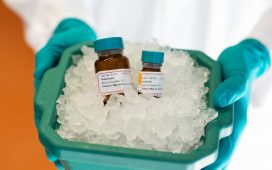Some foods that you typically think of as being high in carbohydrates are also rich in protein — an essential source for various bodily functions which act as the building blocks for tissues, organs and cells. People associate eggs as an excellent source of protein and undestandably — as there is no doubt they are a great option but there are several other foods that contain more.
If you’re looking for more varied examples of protein beyond an egg, you may be surprised about how many options you have, especially if you’re following a plant-based diet. Josten Fish, RD, the owner of Dietitian Meets Mom said: “Some foods that are traditionally thought of as high-carb foods contain a surprising amount of protein.” Proteins are also essential for your heart health.
One study looking at over 12,000 participants found that people who included at least four types of protein in their diets each week — like eggs, meat, whole grains and legumes, had a 26% lower risk of developing high blood pressure compared to those who got less.
Protein is vital for the growth, repair, and maintenance of the body by helping out body function in a number of different ways.
All cells in the human body use protein. Josten said: “Protein is a macronutrient made up of amino acids, which are often referred to as the body’s building blocks.
“Your body uses protein to build muscle and tissue, maintain hormones, make enzymes for digestion and provide energy.”
For optimal health and to maintain muscle mass, Josten recommends aiming for 20 to 30 grams of protein per meal and 15 grams of protein per snack.
You can get to that goal with traditional protein foods like lean meat, poultry, Greek-style yoghurt, fish and seafood and eggs, as well as plant-based options, including certain carbohydrates which are essential for those on a vegan diet.
There are six grams of protein in one egg, so we rounded up six carb-rich foods with at least as much protein per serving as an egg.
If you’re trying to up your protein, consider including these six options in your weekly meal prep as recommended by Eating Well.
1. Beans
Beans are affordable and versatile. You can keep some in the fridge or pantry and toss them into burritos, tacos, salads, soups and more.
Black beans, pinto beans, great northern beans; no matter which you choose, you’ll pack in the protein if you eat them.
Just one cup of cooked black beans contains 15 grams of protein plus 15 grams of filling fibre. In addition to protein, beans provide minerals, such as calcium, folate and potassium.
2. Lentils
Just like beans, lentils are in the legume family — and they’re packed with nutrition. One cup of cooked lentils contains nearly 18 grams of protein, three times the amount of an egg.
Lentils come in several colours, including green, brown, black, red and yellow. Each type is slightly different in flavour and texture, so it’s best to try a few to find your favourite.
3. Chickpeas
Technically also in the bean category, chickpeas (also called garbanzo beans) are so versatile that they deserve to be highlighted by themselves.
One cup of cooked chickpeas provides nearly 15 grams of protein and a whopping 13 grams of fibre. The ingredient is also a good source of choline, a nutrient important for metabolic function and heart health, and one that most Americans don’t get enough of.
There are many different ways you can enjoy chickpeas. For a snack with the crunch and satisfaction of nuts but fewer calories, and they are also a popular addition to salads.
4. Quinoa
It is sort of like eating rice but with more of a protein punch, quinoa is a popular option for protein lovers.
It’s a grain that provides eight grams of protein and five grams of fibre in a one-cup cooked serving. Quinoa is one of the few plant-based sources of complete protein. In addition, it’s also a good source of iron as well.
5. Farro
Farro is an ancient wheat grain that many people describe the taste of as ‘nutty’. There are six grams of protein per quarter-cup of dry farro, which equals about ½ cup cooked.
It’s got a great chewy texture and is a versatile ingredient. Farro makes a great salad base, and for breakfast packed with protein and fibre, you can prepare it the night before as a cereal.
6. Whole-Wheat Pasta
While not traditionally thought of as a protein-rich food, pasta does pack a good dose of it. One cup of cooked whole-wheat spaghetti provides seven grams of protein.
Whole-wheat pasta has a nuttier flavour than refined, white-flour pasta and works in a variety of dishes — from pasta salad to spaghetti and meatballs.
If you want to pack even more protein into your pasta, consider opting for legume-based pastas, such as those made with lentils, beans or chickpeas.










